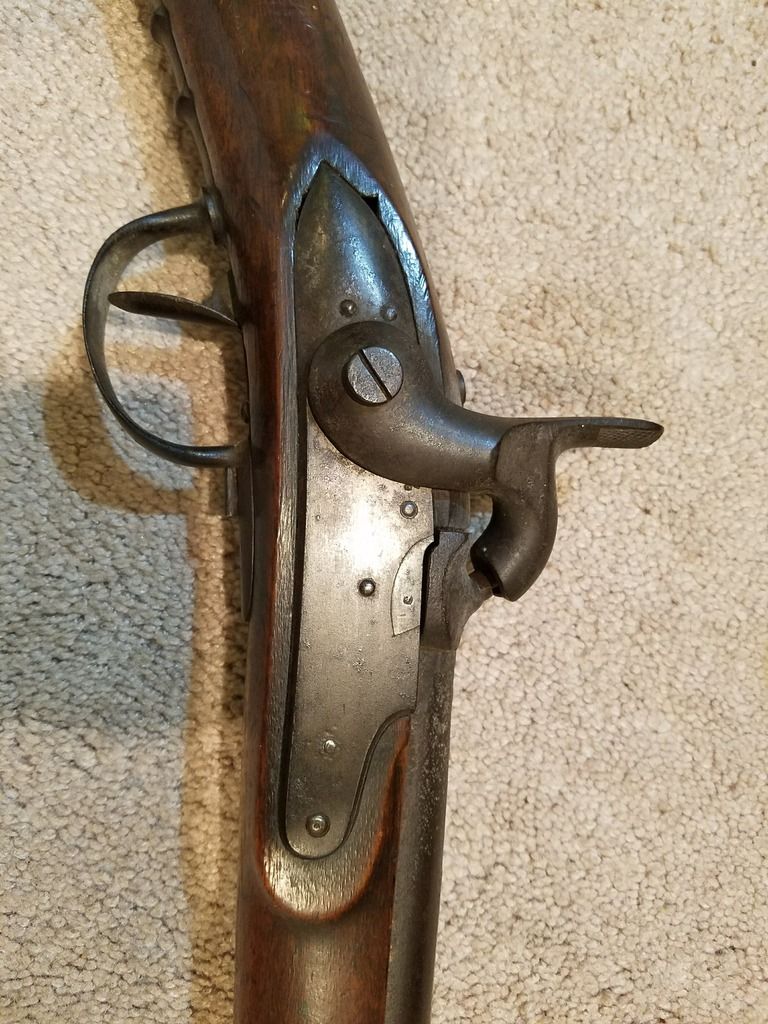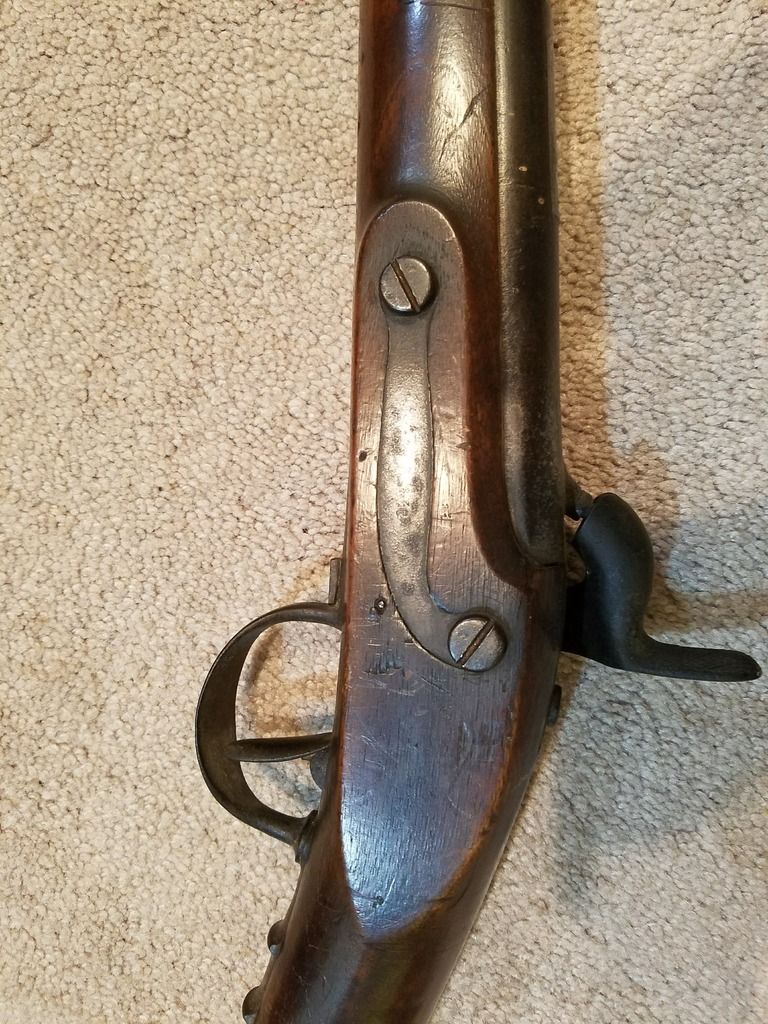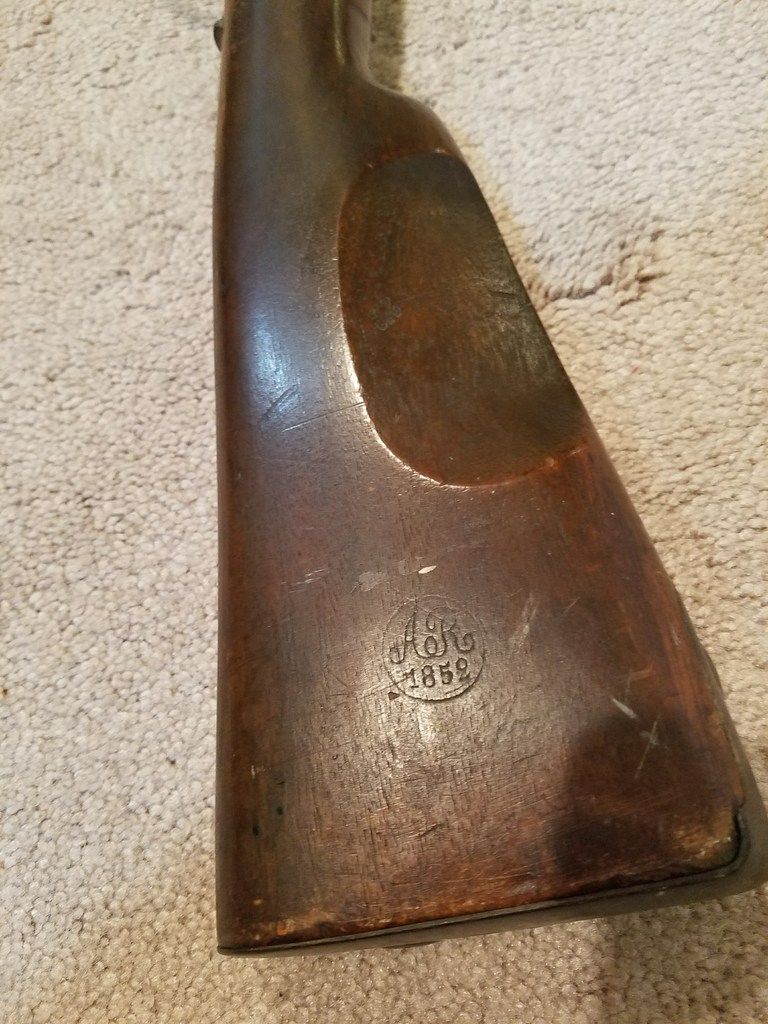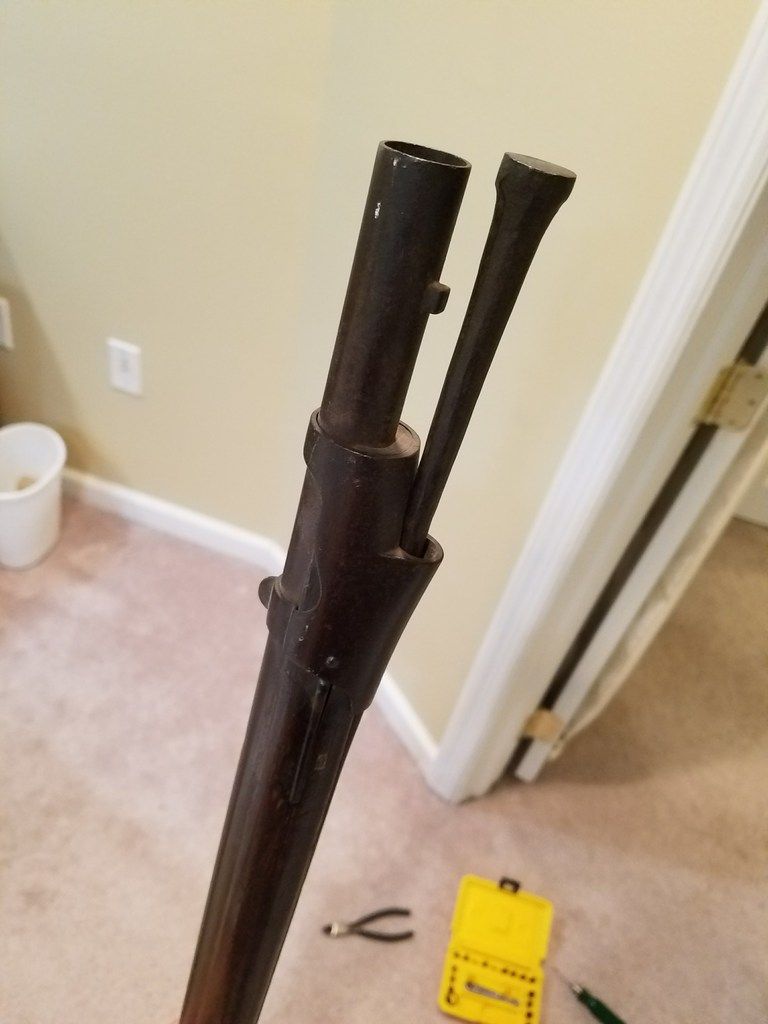tnlonghunter
40 Cal.
My coworker's husband has inherited these 4 originals as family heirlooms. They're not shooters or gun people at all, so I offered to do a little research for them on what these are. Selfishly, it's just an excuse to spend a little quality time with some original arms that I likely won't ever be in a position to buy. So, I'd just like to check for any additional knowledge I can pass along. Can anyone add to or correct my impressions below so that I can provide my friend an accurate description of what she has?
Springfield Armory 1852(?) Smoothbore musket. .72 cal bore the muzzle. Maybe it's a coned barrel, since I think this was supposed to be a .69 cal musket? No marks on lock. The stamp on the butt seems to indicate 1852 manufacture(?), but I don't know what the initials mean.





Springfield Armory 1852(?) Smoothbore musket. .72 cal bore the muzzle. Maybe it's a coned barrel, since I think this was supposed to be a .69 cal musket? No marks on lock. The stamp on the butt seems to indicate 1852 manufacture(?), but I don't know what the initials mean.











